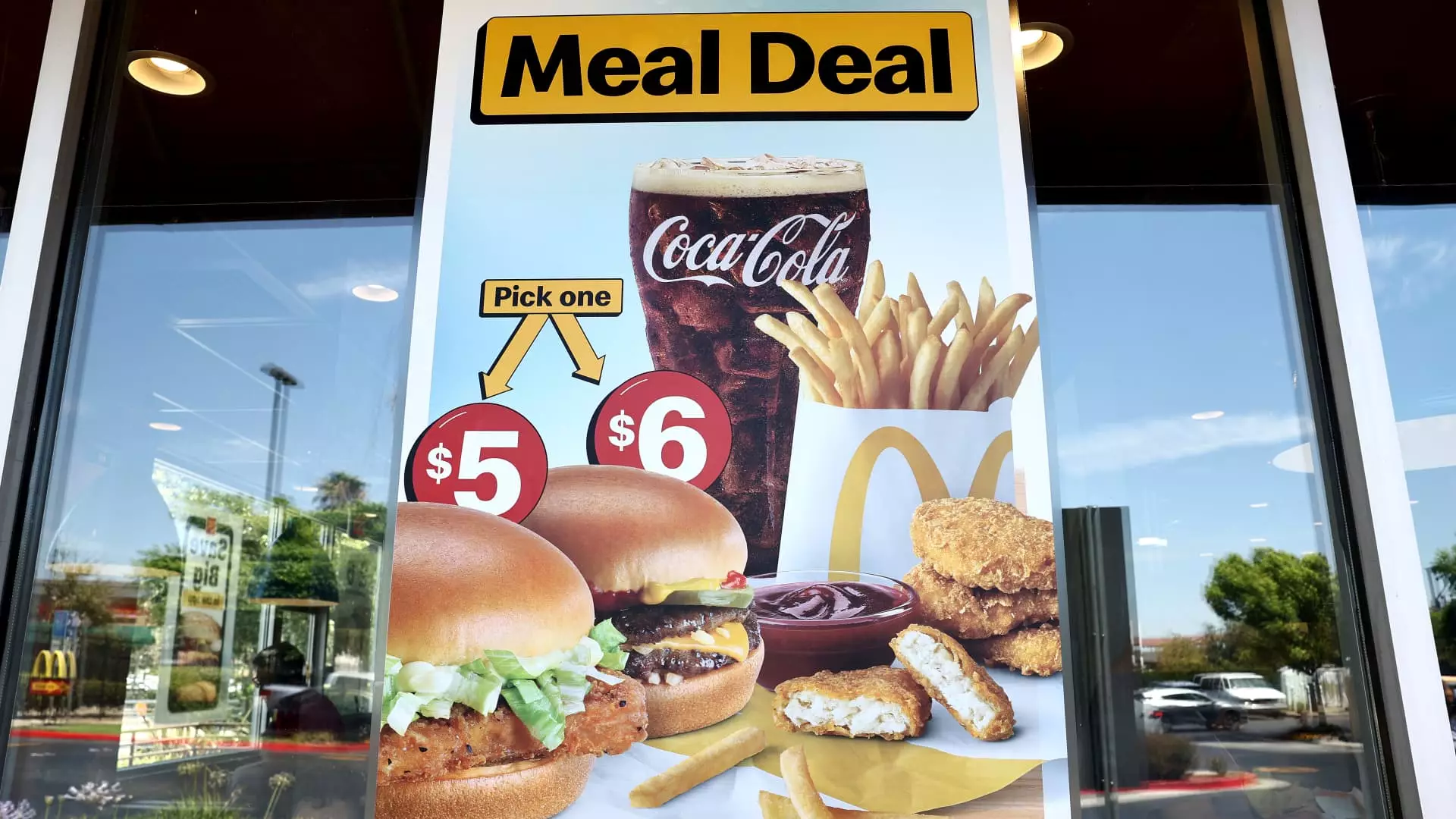Fast-food chains are currently in the midst of a price battle, with many establishments bringing back the $5 price point in an effort to attract customers who are tightening their belts due to economic concerns. While some chains, like Chipotle, are seeing success without relying on these promotions, others such as McDonald’s, Taco Bell, Burger King, and Wendy’s are hoping to see an uptick in sales by offering $5 meal deals. However, despite an increase in traffic, these promotions may not be yielding the significant sales boost that investors are anticipating.
In recent years, consumers have been increasingly turned off by fast-food prices, with more than 60% of survey respondents stating that they have scaled back their spending on fast food due to high costs. The perception that fast food no longer offers a good deal has led to a decline in visits, especially among low-income customers who form a significant portion of the fast-food industry’s clientele. This shift in consumer behavior has also been felt on Wall Street, with shares of major fast-food chains experiencing double-digit declines.
Another critical aspect of the fast-food landscape is the impact of these promotions on franchisees. While companies like McDonald’s are rolling out value meals to drive traffic and boost sales, franchisees are wary of the potential negative effects on their profits. The resistance from franchisees, who have gained more power in recent years, poses a challenge for parent companies looking to implement widespread discounts to attract customers.
As fast-food chains navigate the $5 price war, there is a growing concern about the sustainability of these promotions in the long run. While discounts may drive traffic in the short term, the risk of lower profits and an inability to retain customers without additional purchases is a looming threat. The cautionary tale of Subway’s $5 footlong deal serves as a reminder of the pitfalls of prolonged discounting and its impact on brand perception and profitability.
The $5 fast-food wars highlight the complexities of balancing affordability with profitability in an increasingly competitive market. As consumer behavior shifts and franchisee resistance grows, fast-food chains must carefully evaluate the long-term implications of their pricing strategies to ensure sustained success in the ever-evolving industry landscape.

